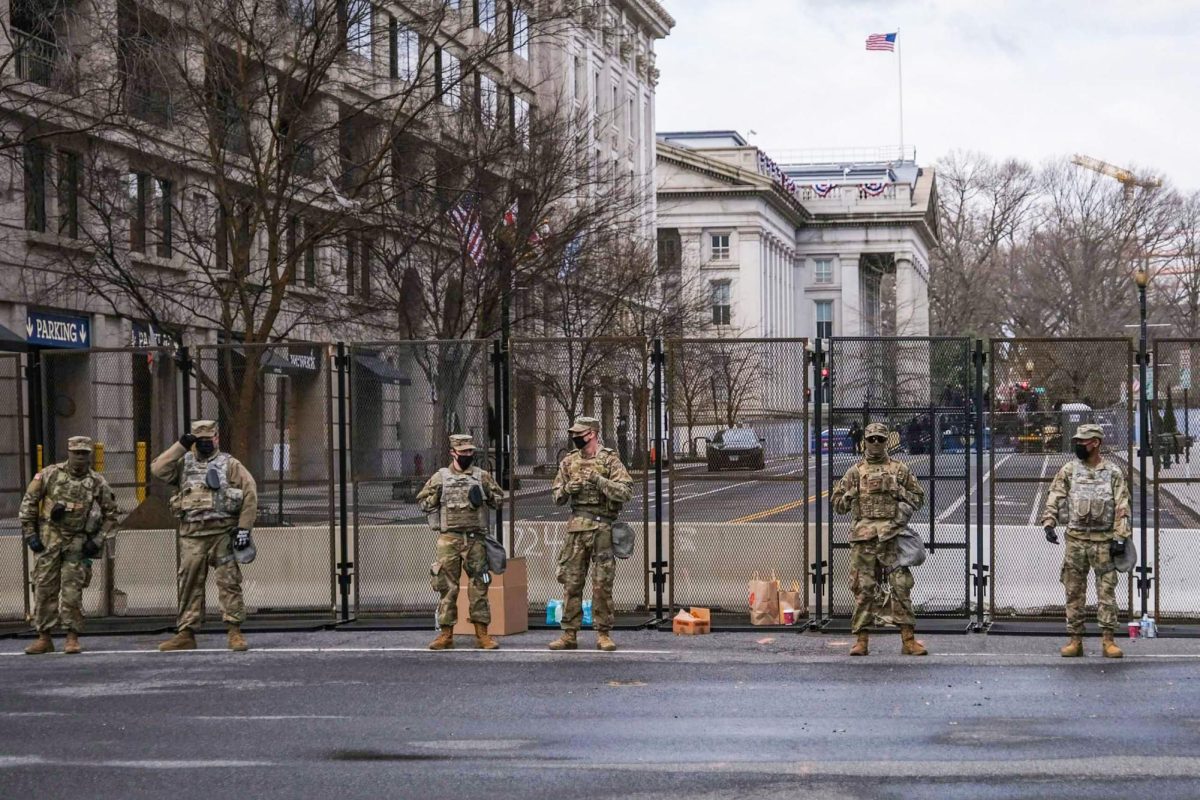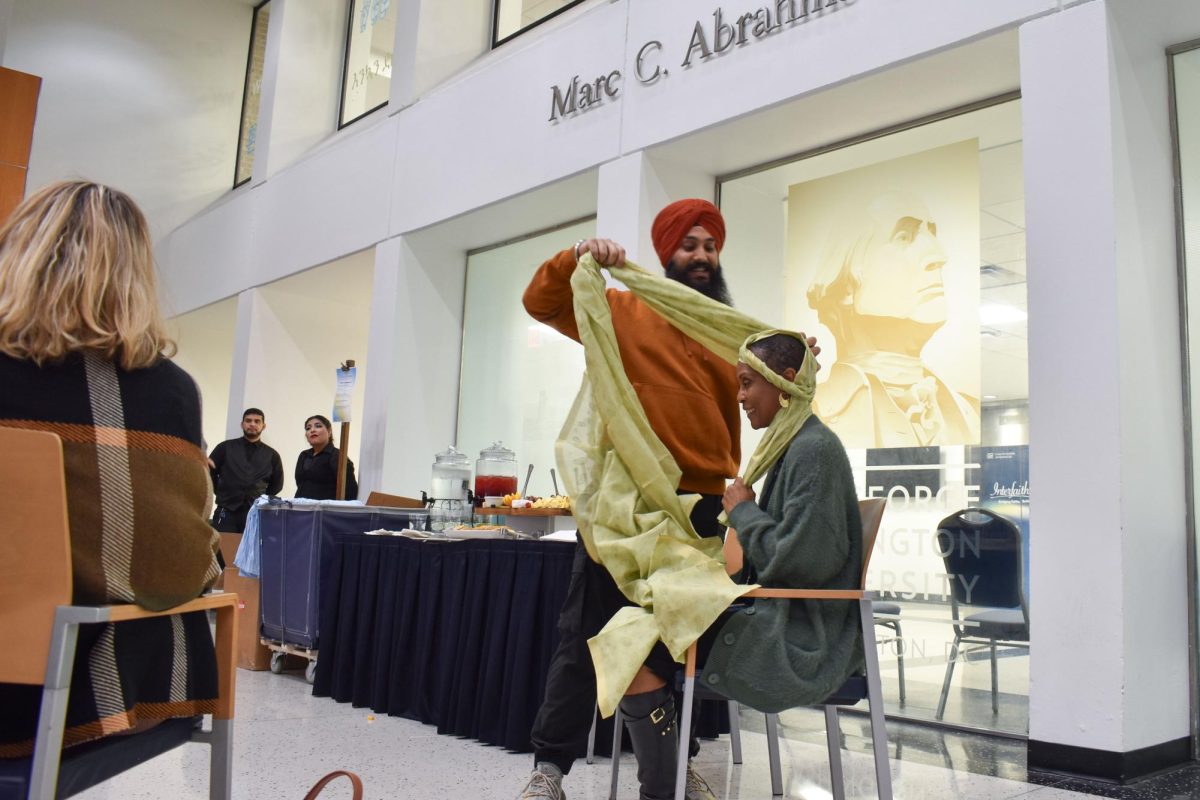GW president Stephen Joel Trachtenberg will travel cross-country in the next three months in search of about $5 million to complete a five-year fundraising campaign.
The Centuries Campaign, an effort to raise $500 million by 2003, has taken him to places like Morocco and Turkey and landed the University multiple partnerships and donations.
“We’ll make it if I have to give the damn money myself,” Trachtenberg said. While feeling pressure from the Board of Trustees to finish the campaign, he said the University should meet its goal if the current fundraising rate keeps up.
The Centuries Campaign benefits some current programs while about half the money goes to GW’s endowment.
GW started the Centuries Campaign in 1996 with a goal to raise $300 million by 2000. With about $230 million by October 1998, the Board of Trustees voted to set its sights higher during an economic time in which Trachtenberg said the University would have been “crazy to quit.”
The campaign raised $65 million since last December, during which Trachtenberg and University development staff solicited donations from alumni and worldwide benefactors.
A visit to Istanbul, Turkey landed Trachtenberg and GW a partnership with Bosphorus University made possible by a $200 million donation from a Turkish student’s parent. The money provides resources for students and faculty, scholarships and travel funds for exchange students.
The Centuries Campaign will put $260 million into GW’s endowment. The endowment, currently worth about $713 million, is a portfolio of investments, the interest from which the University can spend each year.
The interest from some of these donations, such as $8 million the Dorothy M. Shapiro gave from 1992 through 1999, has been used for visiting professors, scholarships and fellowships.
The money allows Dr. Miguel Angel Rodriguez, who served as president of Costa Rica until from 1998 until May 2002, to teach in the Elliott School of International Affairs.
The fund also supports School of Media and Public Affairs professors Steve Roberts and Carl Stern. Roberts, a former New York Times correspondent and senior writer for U.S. News and World Report, regularly appears on PBS’s “Washington Week in Review” and “Fox Morning News.” Stern covered the Supreme Court and Justice Department for NBC for 26 years.
Students can apply for the J.B. and Maurice C. Shapiro Oxford Scholarship, which sends GW graduate students to Oxford University in England and the Dorothy M. and Maurice C. Shapiro Traveling Fellowship, which supports GW students for an academic year of travel and study, research or public service, each year.
Ongoing programs and research, such as financial aid and science, anthropology and medical research will receive $200 million from the Centuries Campaign.
Construction and upkeep of facilities like the Health and Wellness Center, last year’s Law School addition, the new Elliott School of International Affairs building and the School of Business and Public Management that will break ground next week, will require $40 million of the campaign.
While GW has more difficulty soliciting donations from major corporations because few are located in D.C., unlike Northwestern University in Chicago the University has unique international opportunities for fundraising and partnerships.
“There’s no patent on this idea,” he said. “But we have a little bit of an advantage because I get a chance to work with ambassadors.”
In addition to Trachtenberg’s travels, Vice President for Advancement Beverly Bond has also visited alumni and other prospective donors around the United States.
“We talk directly one on one with people who have an interest in GW, often times that’s alumni,” said Bond, who helped Vanderbilt University reach record fundraising levels in the late 90s before coming to GW, after completing a six-year, $560 million capital campaign at Vanderbilt in 1995. “We explain to them our needs and identify areas that they’re interested in helping with.”
She said she has also contacted corporations and foundations that “support areas where we have key initiatives going on.”
For endowment donations, GW fundraisers usually seek out larger gifts so the money will earn sufficient interest to spend, Bond told By George in March. According to the report, she said an endowed faculty chair costs about $2 million.
Other fundraising strategies include talking to people about making planned gifts in a trust or will and hosting alumni events, like one with GW alumnus and Congressman Rep. ClIff Stearns (R-Fla.) on Capitol Hill last year.
Trachtenberg said he visits or speaks with “more robust prospects” for donations.
He said the University will look within the United States for the remainder of the campaign, and hopes to solicit donations from D.C. financial corporations.
“I hope people will focus on what the money can do to make this a stronger place,” Bond said.
Bond also said the University recently created a global advisory board for giving that looks outside the country for donations.
Most universities use similar fundraising strategies. About 82 percent into its Third Century Campaign as of this summer, Georgetown looks to meet a goal of $1 billion by 2003 for new endowment, facilities, program support and its annual giving fund.
Georgetown extended the campaign, begun in 1995 to raise $750 million by 2001, in fall 2000.
Three years ago, nine students began the Georgetown Fundraising Commission, which solicits tax-exempt corporate donations to the university to benefit student groups.
Northwestern University is about $49 million away from a $1.4 billion goal set for August 2003. Campaign Northwestern, also begun in 1995, took in more than $30 million from mid-July the end of September, according The Daily Northwestern. Northwestern fundraisers look primarily to individuals, corporations and private foundations for donations.
Harvard University, which boasts the country’s largest university endowment with almost $18 billion, announced tentative plans for a $1 billion fundraiser for life sciences programs over the summer, according to The Harvard Crimson.
The school completed a five-and-a-half year, $2.6 billion capital campaign in December 1999, the biggest higher education fundraising effort recorded in the country
Harvard’s traditional “campaign model” involves a two-year quiet phase during which the University “tests the fundraising waters” and tries to raise a third of its overall goal, then a public kick-off within three years helps the fundraiser pick up speed, The Crimson reported in September.
Trachtenberg, who recently decided to extend his contract that ends this year through 2007, said he will be glad to see the end of the campaign.
“It’s been going on for a little while, it’s a little tiring,” he said. “I have to start thinking about where we go from here.”
Trachtenberg said after the Centuries Campaign ends, the University will focus more on “academic excellence.”
“While it’s not accurate, there’s a perception that we’ve gotten a lot of our bricks and mortar in place,” he said, naming public health and science as areas that need more room for research.
Bond stressed the importance of fundraising after the campaign is complete.
“We will always be needing contributions whether we are in a campaign or not,” she said. “The campaign helps us to really intensify our efforts, it helps make everybody even more keenly aware but it doesn’t mean (after the Centuries Campaign is over) we won’t always be needing money.”






